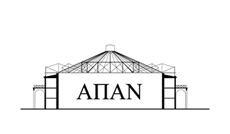Papazotos, Byzantine Icons of Verroia (1995)
[Bibliography]
Thanasis Papazotos, Byzantine Icons of Verroia, John C. Davis (translator), (Akritas, Athens 1995)
First edition
“Verroia has guarded jealously a rich artistic heritage within its forty-eight surviving churches, structures which hardly impress from the outside and which failed to attract the profane eye of the antiquarians of the past. Humble and modest, built of stone and mortar, these buildings -by their very nature somewhat ramshackle constructions- have long been centres of worship for neighbourhoods that are all but closed to the outside world. Later alterations and additions also testify to an age-old respect and awe before a tradition which only in recent decades has begun to be shaken. Throughout the long course of history nothing was thrown away, and materials, however old, were always held to serve a useful purpose. On examining a Verroian church one is left with the feeling that time has deposited its wares in layers, one on top of the other. In 1975, when I first began a survey of the ecclesiastical remains of the city, such a feeling could only be described as a suspicion, still largely unsubstantiated by concrete evidence; fifteen years later, when for a second time I was appointed to the Ephoreia of Antiquities in Verroia, this suspicion proved to have been well-founded. While excavating within the precinct of a surviving Byzantine or post-Byzantine church it never ceases to amaze when it becomes evident that the church is no less than a successor to an early Christian and, subsequently, a middle Byzantine church. One should not underestimate the time scale involved, nor the depth of the historical continuity hidden within the fabric of the monuments. [...]" (From the Preface)
CONTENTS: PREFACE. AN OUTLINE HISTORY OF BYZANTINE VERROIA. THE CHURCHES OF VERROIA AND THEIR ICONS. CHURCHES STILL STANDING, DEMOLISHED CHURCHES AND CHURCHES KNOWN ONLY FROM WRITTEN SOURCES. THE TEMPLA OF VERROIA. BYZANTINE AESTHETICS AND PERCEPTIONS OF THE ICON. THE ICON ACCORDING TO THE SOURCES. THE ART OF THE ICONS OF VERROIA. THE EARLIEST EXAMPLES. COMNENIAN ART: THE EARLY THIRTEENTH CENTURY. THE FIRST PALAEOLOGAN REVIVAL. IN THE WAKE OF THE CAREER OF KALLIERGES IN VERROIA. THE SECOND HALF OF THE FOURTEENTH CENTURY: ICONS OF UNIVERSAL MERIT. THE SECOND HALF OF THE FOURTEENTH CENTURY: ICONS FROM LOCAL WORKSHOPS. WORKS OF THE FIFTEENTH AND THE FIRST DECADES OF THE SIXTEENTH CENTURIES. SELECT BIBLIOGRAPHY. INDEX OF ICONS. PLATES pp. 89-237. Total pages 238 (31 Χ 24) hard cover.

